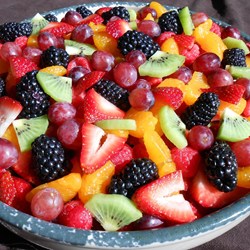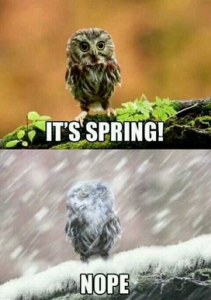There is nothing I like more than a fresh fruit salad in the summer heat, especially as its bikini season and those sweet, juicy fruits curb my chocolate cravings. But those fruits that we’ve all come to take for granted could become so much harder to get hold of – that or they’ll cost an arm and a leg to buy – because of climate change (Miller-Rushing & Primack, 2008).

We associate all our typical summer fruits (strawberries, peaches, raspberries, blackberries – I’d go on but it’s making me hungry) with warm, sunny weather – so how could global warming possibly be bad for them when they love the heat?! Well, all the fruits mentioned above are from the Rosaceae family and, in order to flower and produce that delicious fruit that we all love, they need to be exposed to cold weather (between -3oC & +13oC, depending on the species) for a matter of weeks (Larcher, 2003; Anderson, 2015; Kurokura et al, 2013). This chilling requirement is called vernalisation, which is needed to keep the seeds dormant. During their dormancy period, seeds take up and store energy which they will need when it’s time for them to flower properly. The chilling time keeps them dormant for long enough that they have plenty of energy stored up for flowering (Khan, 1981).

If this period of chilling doesn’t occur, if it is too short or is interrupted by warming, flowering may be late or early and fruits will not grow properly in response to warm spring temperatures, leading to lower quality produce (Prasad-Gotame, 2014; Larcher, 2003; Anderson, 2015) as they haven’t had enough time to gather energy stores.
In the UK, the winter of 2015 was the warmest on record, just ahead of 2014 and predicted to be beaten by the winter of 2016 (Met Office, 2017). Global temperatures are expected to keep rising as a result of global change, as well as unpredictable weather events such as heatwaves, droughts and storms appearing with it. These factors combined lead to uncertainty for fruit farmers, particularly the warmer winters. They need winters to be cold to make sure their seeds flower properly at the end of dormancy when spring or summer arrive.
As temperatures are expected to carry on rising over the foreseeable future, it doesn’t bode well for our summer fruit salads. But not to worry! Scientists across the globe are researching ways to breed resistant plants – that is to say, plants which don’t need a chilling time to produce high quality fruit (Anderson, 2015; Randoux et al, 2012; Anderson, 2007; Kurokura et al, 2013).
Word count: 428
References
Anderson, J. (2015). Advances in Plant Dormancy. 1st ed. Cham: Springer International Publishing.
Anderson, N. (2007). Flower breeding and genetics. 1st ed. Palo Alto, Calif.: Ebrary.
Bernier, G., Havelange, A., Houssa, C., Petitjean, A. and Lejeune, P. (1993). Physiological Signals that lnduce Flowering. The Plant Cell, 5, pp.1147-1155.
Khan, A. (1977). The Physiology and biochemistry of seed dormancy and germination. 1st ed. Amsterdam: North-Holland Pub. Co.
Kurokura, T., Mimida, N., Battey, N. and Hytonen, T. (2013). The regulation of seasonal flowering in the Rosaceae. Journal of Experimental Botany, 64(14), pp.4131-4141.
Lange, O. (1981). Physiological plant ecology. 4th ed. Berlin [etc.]: Springer.
Met Office. (2017). UK climate. [online] Available at: http://www.metoffice.gov.uk/climate [Accessed 20 Mar. 2017].
Miller-Rushing, A. and Primack, R. (2008). Global warming and flowering times in thoreau’s concord: a community perspective. Ecology, 89(2), pp.332-341.
Prasad Gotame, T. (2014). Understanding the effect s of temperature on raspberry physiology and gene expression profiles. University of Aarhus.
Randoux, M., Jeauffre, J., Thouroude, T., Vasseur, F., Hamama, L., Juchaux, M., Sakr, S. and Foucher, F. (2012). Gibberellins regulate the transcription of the continuous flowering regulator, RoKSN, a rose TFL1 homologue. Journal of Experimental Botany, 63(18), pp.6543-6554.
Recent Comments